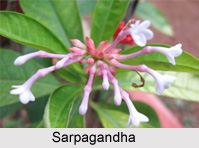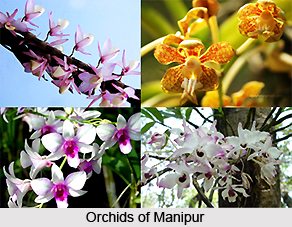The usage of betel leaf can be delineated as far back as two thousand years. It is described in the most olden historical book of Sri Lanka, Mahavasma, scripted in Pali.
 Betel is indigenous to central and eastern Malaysia. It had multiplied at a very early date, all through tropical Asia and later to Madagascar and East Africa. In India, it is extensively cultivated in Tamil Nadu, Madhya Pradesh, West Bengal, Orissa, Maharashtra and Uttar Pradesh. Offering betel morsel (pan-supari) to invitees in Indian subcontinent is a widespread civility.
Betel is indigenous to central and eastern Malaysia. It had multiplied at a very early date, all through tropical Asia and later to Madagascar and East Africa. In India, it is extensively cultivated in Tamil Nadu, Madhya Pradesh, West Bengal, Orissa, Maharashtra and Uttar Pradesh. Offering betel morsel (pan-supari) to invitees in Indian subcontinent is a widespread civility.
Methods of usage
Betel leaf in its original form or mixed with other matters is equally beneficial in various kinds of sores, aches and inflammation.
Healing Power and Medicinal Properties in betel leaves
Betel leaf has been in use since prehistorical times as a sweet-smelling stimulant and anti-flatulent. It is useful in arresting secretion or haemorrhage and is also an aphrodisiac. Its leaf is used in several ordinary household antidotes.
Scanty or Obstructed Urination cured by betel leaves
Betel leaf juice is attributed with diuretic characteristics. Its juice, when blended with diluted milk and sugared slightly, immensely helps in relieving urination.
Weakness of Nerves cured by betel leaves
Betel leaves are advantageous in the cure of nervous pains, nervous exhaustion and frailness. The juice of a few betel leaves, with a teaspoon of honey, will function as a refreshing energy-gainer. A teaspoon of this can be taken twice daily.
Headaches healed by betel leaves
The betel leaf has analgesic and soothing properties. It can be massaged with favourable results over the aching area to alleviate acute headache.
Respiratory Disorders healed by betel leaves
Betel leaves are helpful in pulmonary ailments in childhood and old age. The leaves, dowsed in mustard oil and warmed, can be massaged on the chest to alleviate cough and obstruction in breathing.
Constipation cured by betel leaves
In instances of constipation in children, a suppository made from the stalk of betel leaf doused in castor oil can be inserted in the rectum. This alleviates constipation right away.
 Sore Throat healed by betel leaves
Sore Throat healed by betel leaves
Localised massage of the leaves is effective in healing aching throat. The mashed fruit or berry should be blended with honey and taken to lessen painful cough.
Inflammation cured betel leaves
Massaged locally, betel leaves are advantageous in the treatment of swelling, such as arthritis and orchitis, i.e. redness of the testes.
Wounds healed by betel leaves
Betel leaves can be used to mend injuries. The juice of a few leaves should be distilled and massaged on the wound. Then a betel leaf should be draped over and bandaged. The wound will heal up with a single coating, within 2 days.
Boils cured by betel leaves
The herb is also an effective remedial for boils. A leaf is tenderly warmed till it gets dampened, and is then encrusted with a layer of castor oil. The oiled leaf is spread over the reddened part. This leaf has to be changed, every few hours. After a few massages the boil will burst, draining all the pussy matter. The application can be massaged at night and removed in the morning.
Lumbago healed by betel leaves
A hot poultice of the leaves or their juice blended with some flavourless oil such as refined coconut oil can be massaged on the loins with favourable results in lumbago.
Problem of Breast Milk Secretion cured by betel leaves
The application of leaves smudged with oil is believed to encourage secretion of milk when implemented on the breasts during lactation.
Precautions - Cancer of the mouth and lips has been evidenced to be more regular in areas where betel chewing habit is extensively predominant. Other ill-effects of pan-chewing like dyspepsia, pyorrhoea, cancer of the tongue and cheeks have also been detected among exuberant chewers.
Other Uses of betel leaves
Aphrodisiac- Pan-supari, particularly pan, is ordained by Ayurvedic physicians as an aphrodisiac. Partially due to its deodorant, aphrodisiac, and exalting properties, pan-supari became a part of the custom with which a wife welcomed her spouse.
Betel leaves are chewed together with betel nut as a masticator. In its barest form, shredded betel nut is draped in a betel leaf, smudged with lime and chewed. Often though, clove and other spices such as cinnamon and cardamom are used as garnishings. When chewed after meals, it sweetens the breath and acts as a stimulant.
Composition
The betel plant is a willowy, perfumed creeper, rooting at the nodes. The branches of the plant are bloated at the nodes. The plant has alternating, heart-shaped, polished, shiny and tall-stalked leaves, with sharpened apex. It has five to seven ribs growing from the base; tiny flowers and one-seeded globular small borries.
An analysis of the betel leaf illustrates that it consists of 85.4% moisture, 3.1% protein, 0.8% fat, 2.3% minerals, 2.3% fibre and 6.1% carbohydrates per 100 grams. Its minerals and vitamin contents include calcium, carotene, thiamine, riboflavin, niacin and vitamin C. Its vital energy value is 44.
Fresh analyses have proved that betel leaves contain tannins, sugar and diastases and a volatile oil. The volatile oil is a light yellow liquid of fragrant odour and sharp smouldering in flavour. It comprises a phenol called chavicol which has dominant antiseptic properties. The alkaloid arakene in it has properties similar to cocaine in some regards.











